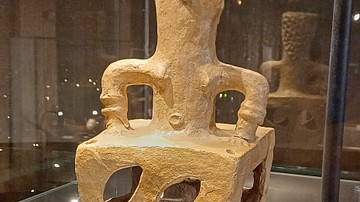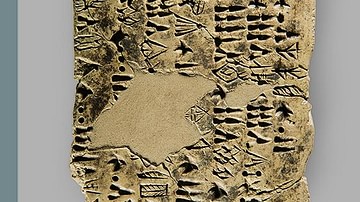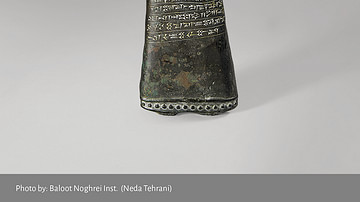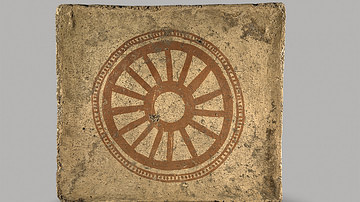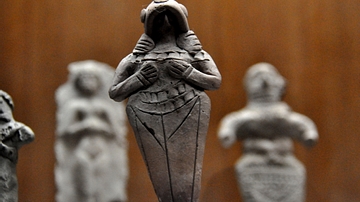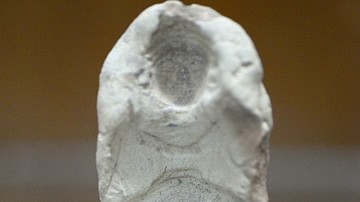Illustration
Neolithic clay goddess from Tappah Sarab, Kermanshah, 7000-6100 BCE.
Clay figurines of female bodies with exaggerated reproductive organs are among the most common features of prehistoric sculpted art. With famous examples from Venus of Willendorf (c. 30,000 BCE) to the Seated Woman of Çatalhöyük (c. 6000 BCE), these mysterious figurines could well be created and functioned as fertility charms and/or deities, embodiments of the Great Mother, and symbols of a matriarchal power presiding life and death.
National Museum of Iran, Tehran.
Cite This Work
APA Style
Nationalmuseumofiran. (2024, January 08). Neolithic Clay Figurine from West Iran. World History Encyclopedia. Retrieved from https://www.worldhistory.org/image/18287/neolithic-clay-figurine-from-west-iran/
Chicago Style
Nationalmuseumofiran. "Neolithic Clay Figurine from West Iran." World History Encyclopedia. Last modified January 08, 2024. https://www.worldhistory.org/image/18287/neolithic-clay-figurine-from-west-iran/.
MLA Style
Nationalmuseumofiran. "Neolithic Clay Figurine from West Iran." World History Encyclopedia. World History Encyclopedia, 08 Jan 2024, https://www.worldhistory.org/image/18287/neolithic-clay-figurine-from-west-iran/. Web. 18 Apr 2025.


